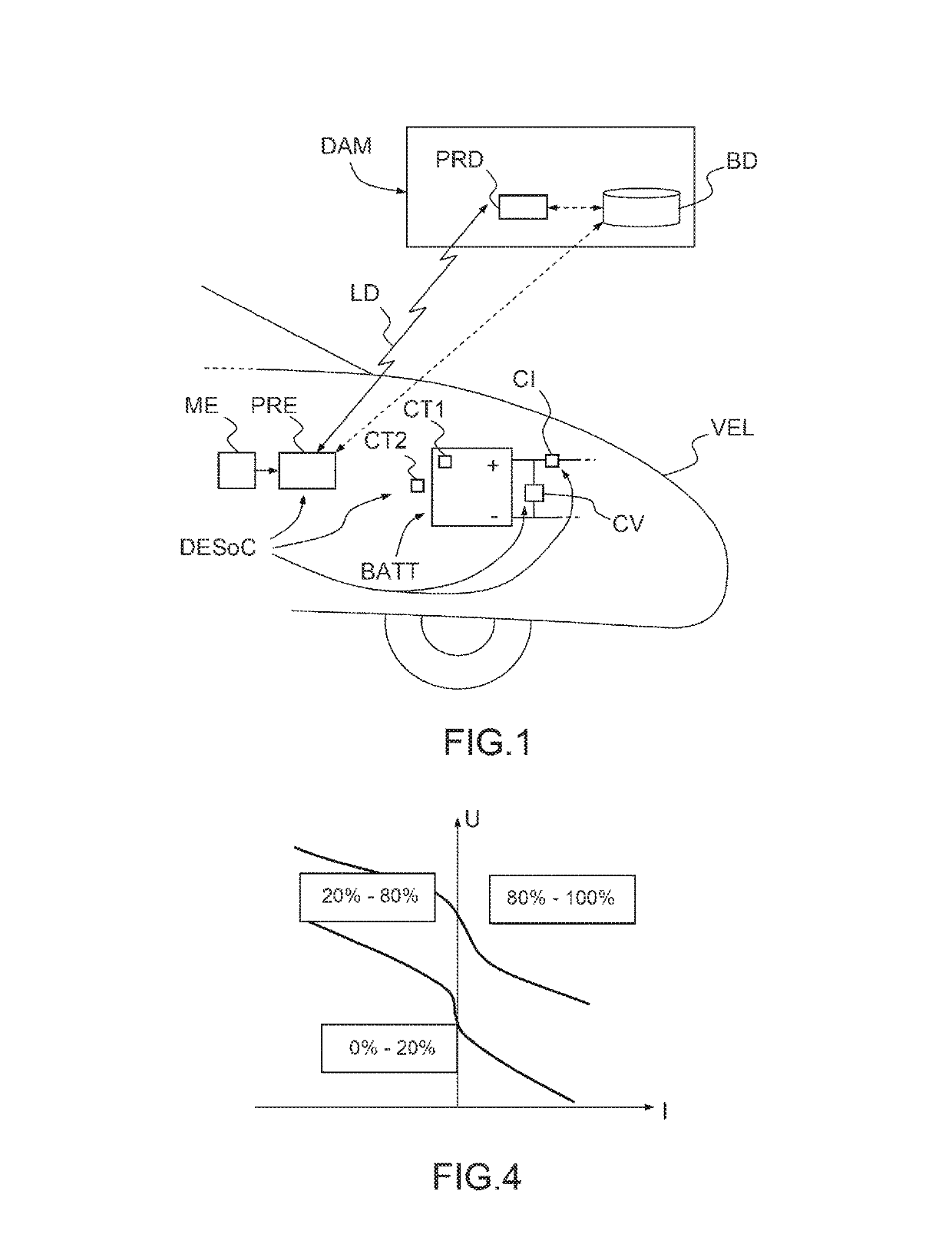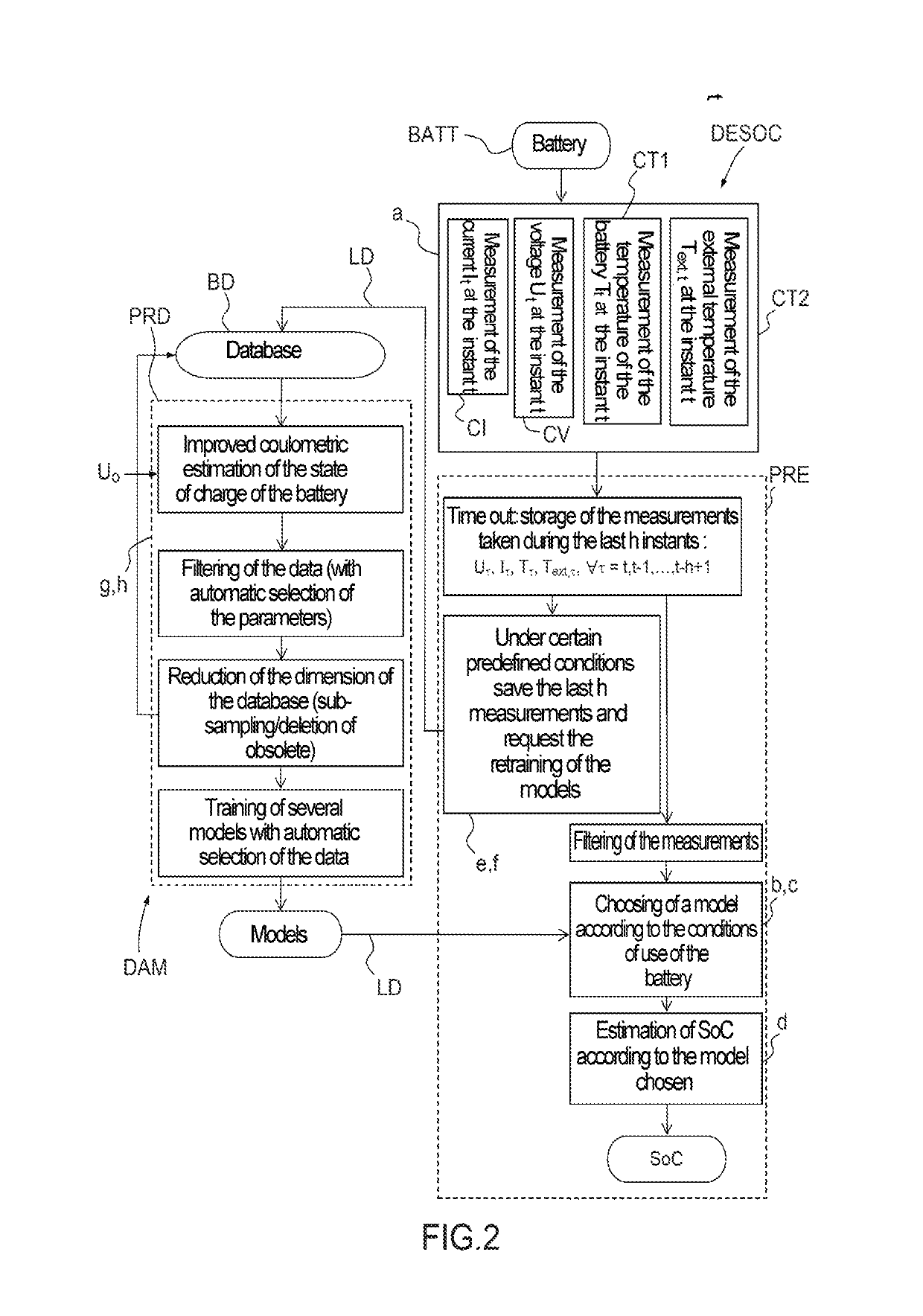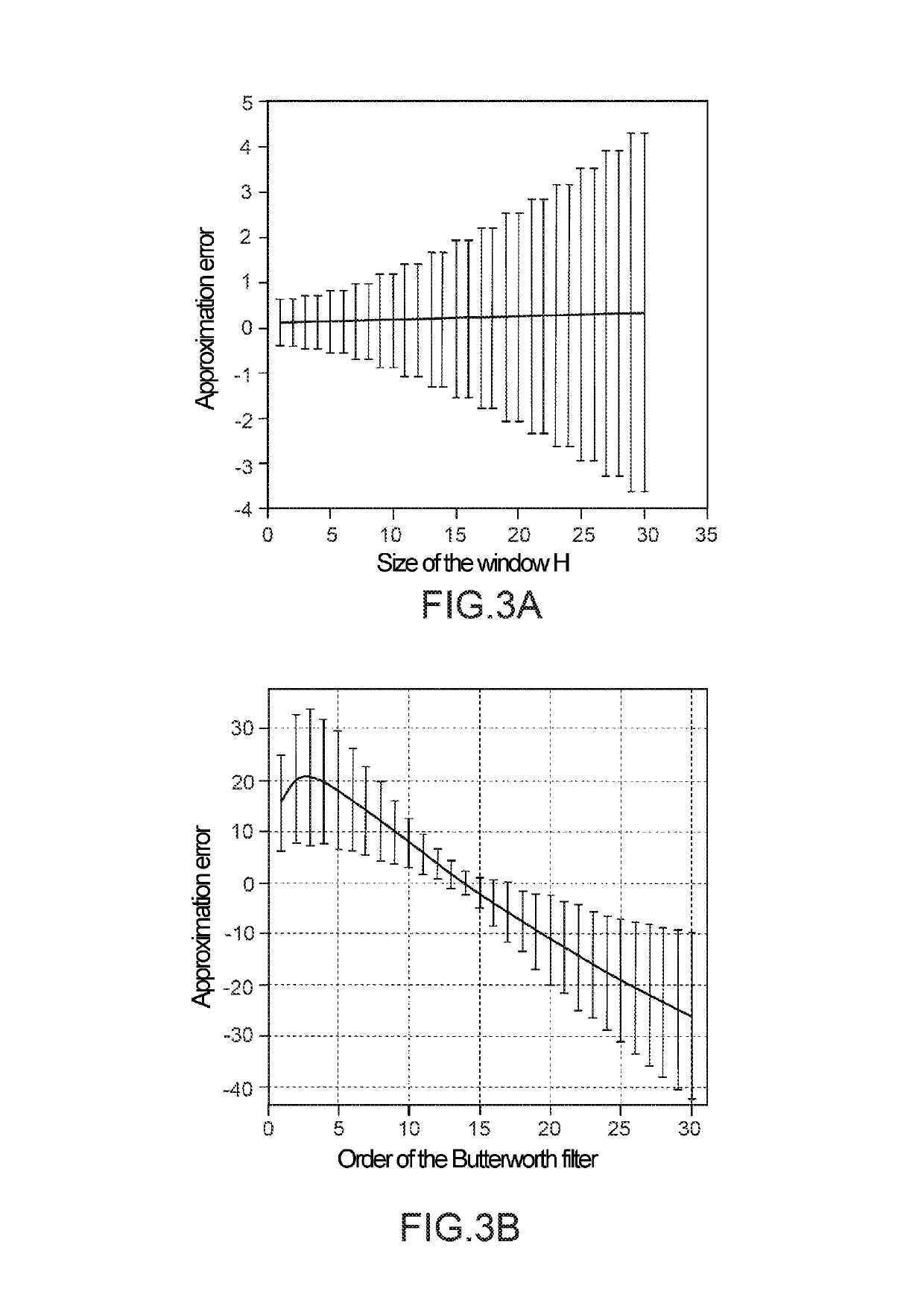Method, device and system for estimating the charge state of a battery
- Summary
- Abstract
- Description
- Claims
- Application Information
AI Technical Summary
Benefits of technology
Problems solved by technology
Method used
Image
Examples
Embodiment Construction
[0059]FIG. 1 represents an electric battery BATT on board an electric or hybrid terrestrial vehicle VEL and connected to a state-of-charge estimation device DESoC according to an embodiment of the invention. This device, also on board, comprises a processor PRE and a plurality of sensors, and in particular: a voltage sensor CV for measuring the voltage across the terminals of the battery; a current sensor CI for measuring a current provided (or absorbed) by the battery, a first temperature sensor CT1 for measuring an internal temperature of the battery and a second temperature sensor CT2 for measuring an ambient temperature outside the temperature. Other sensors may also be present, in particular other temperature sensors for measuring temperatures at various locations of the battery or of its environment. The device DESoC also comprises a memory ME in which are stored the coefficients which define several regression models of the state of charge of the battery, as well as informati...
PUM
 Login to View More
Login to View More Abstract
Description
Claims
Application Information
 Login to View More
Login to View More - Generate Ideas
- Intellectual Property
- Life Sciences
- Materials
- Tech Scout
- Unparalleled Data Quality
- Higher Quality Content
- 60% Fewer Hallucinations
Browse by: Latest US Patents, China's latest patents, Technical Efficacy Thesaurus, Application Domain, Technology Topic, Popular Technical Reports.
© 2025 PatSnap. All rights reserved.Legal|Privacy policy|Modern Slavery Act Transparency Statement|Sitemap|About US| Contact US: help@patsnap.com



